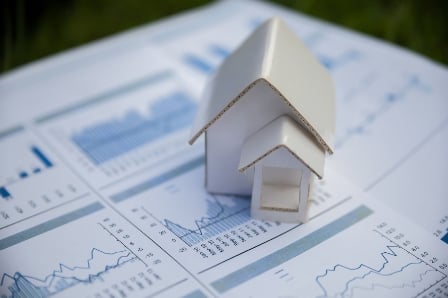

June marked the ninth consecutive month-on-month fall in national home values, taking the cumulative decline to -1.3% since the housing market peaked last September.
Data from CoreLogic has shown that dwelling values in June were 0.2% down over the month, to be 0.8% lower over the year.
According to CoreLogic research director Tim Lawless, despite recent and consistent monthly falls, national dwelling values remain 32.4% higher than five years ago.
He said, “This highlights the wealth creation that many home owners have experienced over the recent growth phase, but also the fact that recent home buyers could be facing negative equity.
“Tighter finance conditions and less investment activity have been the primary drivers of weaker housing market conditions and we don’t see either of these factors relaxing over the second half of 2018, despite APRA’s 10% investment speed limit being lifted this month.”
The research also showed that declines were more pronounced across the most expensive quarter of the market. Based on the CoreLogic stratified hedonic index, values across the most expensive quartile of capital city properties were down 1.5% over the past three months while the least expensive quartile saw values hold firm.
Similarly, over the past twelve months, the most expensive end of the market recorded a decline of 3.6%, while the least expensive end of the market recorded a 1.4% gain.
Declines across the most expensive sector of the capital city market is largely attributable to the declines in Sydney and Melbourne, where the upper quartile of property values fell by 7.3% and 2.5% respectively over the past twelve months.
While much of the housing market focus has been on the downturn in Sydney and Melbourne, most other cities and regions have also experienced a softening trend in market conditions, highlighting the broad-based impact of tighter credit policies.
Based on May housing credit data from the RBA, monthly credit growth for housing purposes has not tracked this low since January 2013.
Additionally, growth for investment housing was absolutely flat in May; the weakest result since the first round of credit tightening, and the bottoming-out of investment lending growth in December 2015.
While most regions are experiencing either a slowdown in growth or falling values, the cities with the highest concentration of investment activity, Sydney and Melbourne, are experiencing the most substantial decline in housing demand.
Lawless said that to some extent, this reduction in demand has been counterbalanced by a surge in first home buyer activity across New South Wales and Victoria, as first time buyers take advantage of stamp duty concessions. However, activity from this segment peaked in November last year, and has continued to wane.
While higher mortgage rates and more stringent lending criteria are having a clear effect on investor participation in the housing market, Lawless highlights that other barriers are also apparent.
He said, “Despite the slippage in home values across Sydney, and to a lesser extent Melbourne, dwelling prices remain very high relative to other capital cities.
“With lenders now focusing more on overall debt to income ratios and household living expenses, housing markets where prices are high relative to incomes could see less activity as prospective buyers find their borrowing capacity reduced.
“Additionally, with the federal election campaign imminent, we could see investor confidence impacted further if changes to taxation polices related to investment housing are debated.”
Although official interest rates are expected to remain on hold until at least late 2019, Lawless said there is growing pressure on lenders to lift mortgage rates due to higher funding costs being experienced overseas.
“Smaller banks and non-banks have more exposure to international funding costs, which has seen some of these lenders start to lift their mortgage rates.
“Should widespread increases to the cost of debt occur, we would expect this could place additional downward pressure on housing market conditions.
“A weaker housing sector would likely show a flow on effect to economic conditions, creating some drag on consumer spending and dwelling construction and creating challenges for those industries that are at least partially reliant on housing turnover.”
